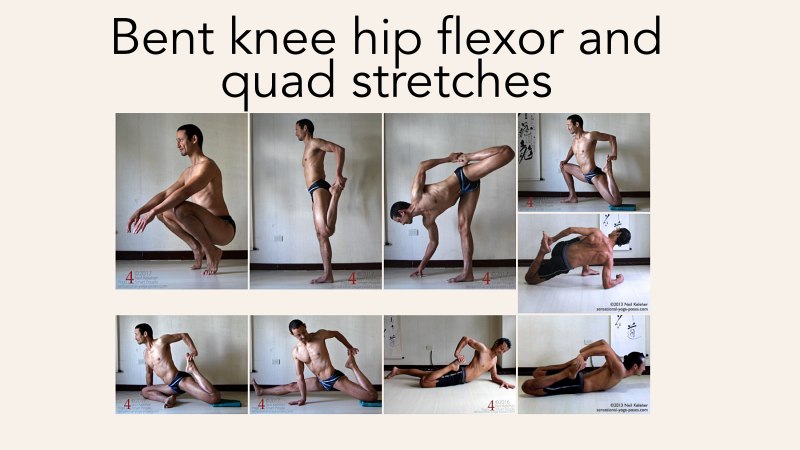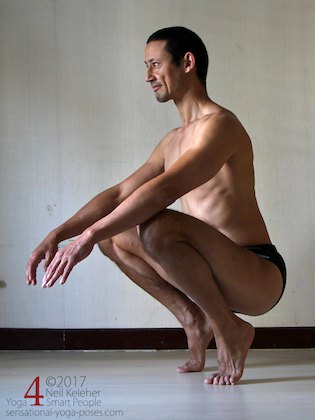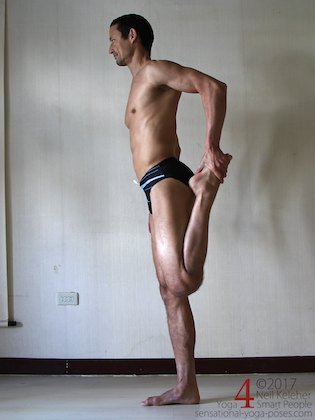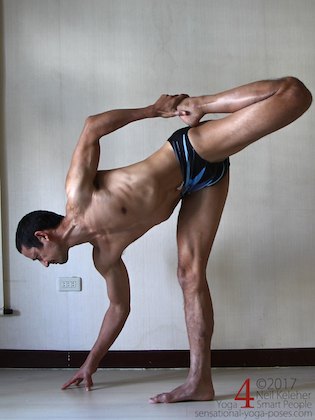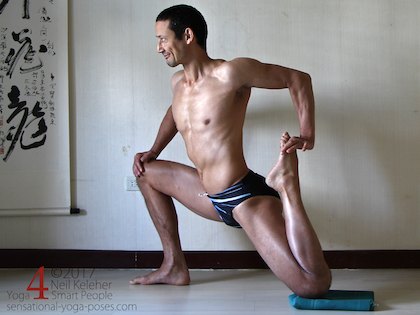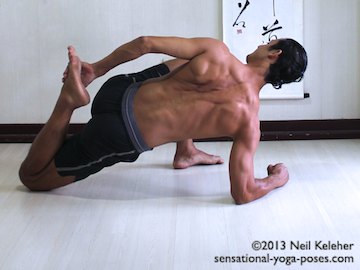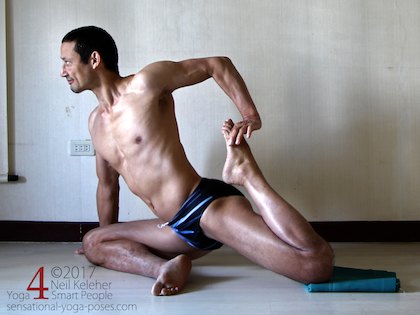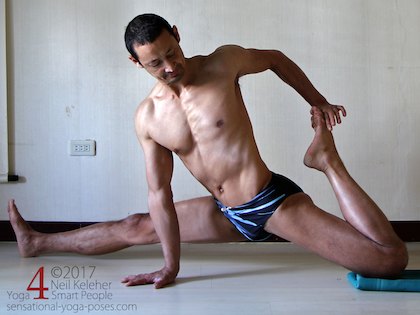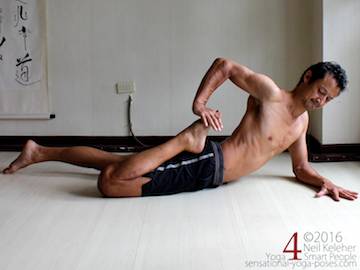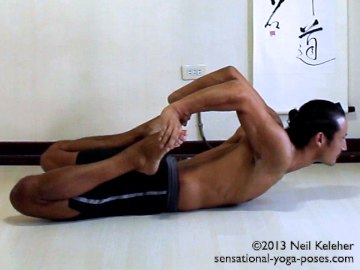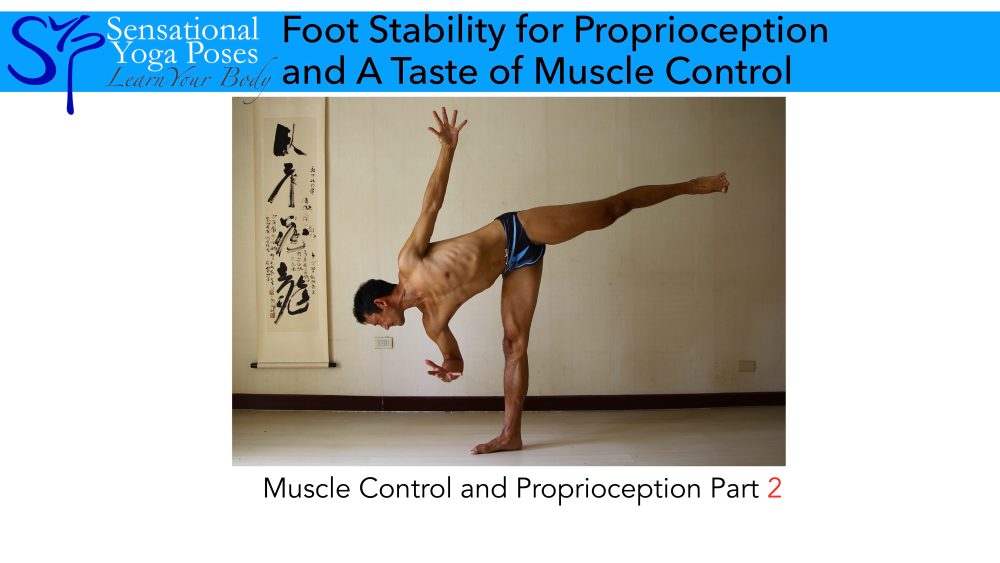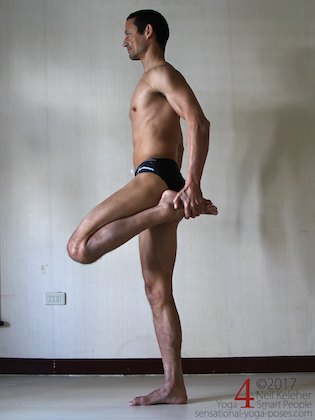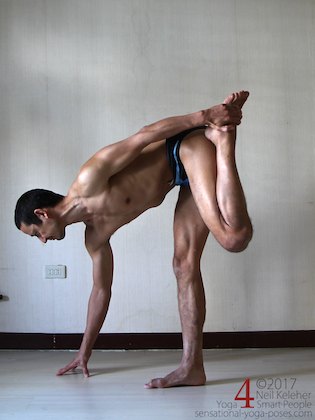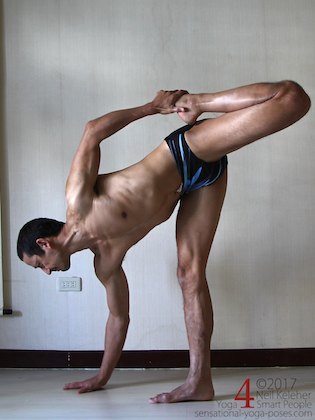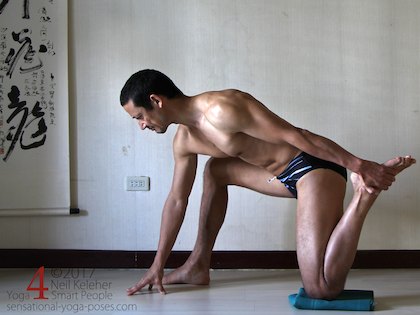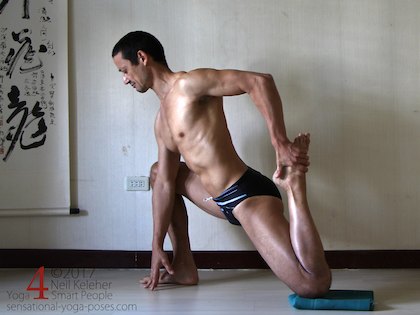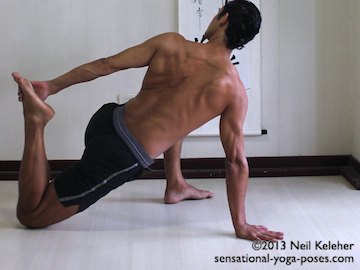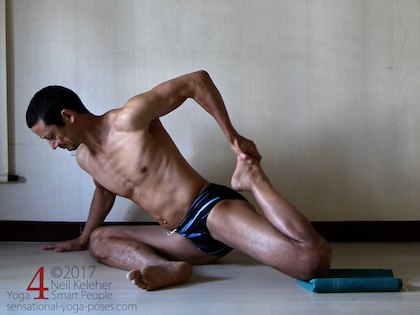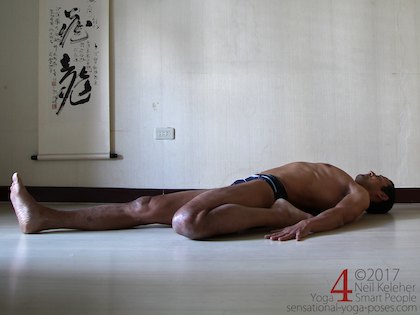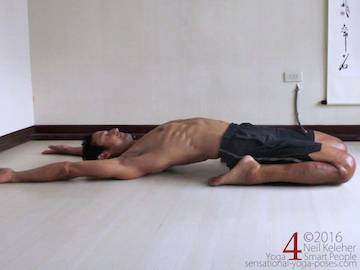Bent knee hip flexor stretches or "quad stretches"
Tips for effectively stretching the rectus femoris
bent knee hip flexor stretches
The rectus femoris is one of a set of hip flexors that attaches at or near the ASICs, the point of the hip bone.
Other hip flexors that attach directly to the ASICs as well as the lower leg bones include the sartorius and the tensor fascia latae. The sartorius passes over the inner quadriceps before attaching to the inside of the tibia while the tensor fascia latae passer over the outer quadriceps, via the IT band, before attaching to the outside of the tibia.
Because of its attachment to the front of the tibia, versus to the sides of it, the rectus femoris is only deeply stretched when the hip is flexed while the knee is bent. Hence these bent knee hip flexor stretches or quad stretches.
Bent knee hip flexor stretches, toc
Related
What to do if you can't knee with your butt on your heels
If you have difficulty touching your butt to your heels while kneeling or squatting, then you may have tight vastus muscles.
The vastus muscles (and how to stretch them)
The vastus muscles are the muscles in the quadriceps that act only on the knee joint. To effectively stretch these muscles, one option is to work at pressing your toes down into the floor while kneeling.
Check out this kneeling quadriceps stretch for more information on stretching the vastus muscles of the quadriceps group.
Why your vastus muscles may be tight
Note that you may have tight vastus muscles because they are compensation for a lack of control elsewhere. You may lack hamstring control which is important for shin rotation control.
For an overview of the various muscles that run up the back of the thighs, read the hamstrings and for a closer look at problems with these muscles you can read hamstring problems.
Shin rotation control, more particularly knee rotation is controlled by the long hip muscles of which the long hip flexor muscles are a part.
Two simple thing you can do for more effective bent knee hip flexor stretching
Since these muscles attach to the hip bones as well as the lower leg bones, these muscles may lack controllability due to poor hip bone stability or poor shin bone (fibula and tibia) stability.
And so your vastus muscles may be tight due to a lack of hip bone and/or foot/ankle stability. And so a general tip is to stabilize your hip bone and/or your foot and ankle while working at stretching your hip flexors.
Squatting as an option to kneeling
If you can't touch your butt to your heels while kneeling, one place you can start is with squatting.
The one advantage of squatting over kneeling is that you can play with different foot positions which can make it easier on your knees. It can also be easier to activate your feet and ankles, particularly if you squat with heels lifted. This in turn can help to anchor the muscles that cross the knee joint.
That being said, if your knees hurt while squatting, then leave this out.
For knee stability, try squatting with the heels lifted.
You can start by standing with heels lifted, and slowly bent your knees to squat down or you can squat down with feet flat on the floor, then with knees fully bent, shift your weight forwards to your forefeet and then lift your heels.
While the end position doesn't stretch the rectus femoris (because the hips are bent forwards or "flexed"), it will help to stretch the vastus muscles. More importantly, because the heels are lifted, the feet will be active (or should be). And that means that muscles that work across the ankles (between the lower leg bones and the bones of the feet) will be active.
They'll then be stabilizing the shin which means that muscles that cross the knee have a stable foundation from which to work on both the femur and hip bone.
Note that if you have difficulty balancing, do this vastus muscle stretch next to a wall (with you hand on the wall for balance). In addition, work at keeping your feet still. Prevent wobbling as much as possible.
And if it hurts your knees, then leave it out.
With this standing bent knee hip flexor stretch it may be a little bit more difficult to activate your quadriceps. You'll have to work at pushing your foot or your ankle (whichever you are grabbing) out of your hand or hands. So you'll have to have a good grip.
So a bonus here is you'll not only strengthen and stretch your quadriceps, you'll also strengthen your hands.
The usual way to stretch the rectus femoris while standing is to stand upright. You can start with the knee forwards to focus on stretching the front of the knee. Then move your knee back so that you also stretch the front of the hip.
Another standing bent knee hip flexor stretching option is to bend forwards.
It helps if you can touch the floor with your hand. If not, use a chair or yoga block for your supporting hand.
Initially start with the knee close to your chest, then move the knee back and up to deepen the quadriceps stretch.
You can do a similar stretch in a low lunge. With some padding under your knee, (you might like to fold you mat over for comfort) first move your hips back and grab your foot. Then move your hips forwards and down. Sink your hips.
You might have to start with your arm straight. This pose can be challenging and it may be because the back knee isn't stabilized or because the back leg hip bone isn't stabilized.
Stabilizing the back knee can involve stiffening the foot as well as the knee.
Stabilizing the hip bone in this pose can be challenging because you are trying to sink the hips while keeping the torso upright. Try pushing your foot back against your hand to activate your hip flexors. Another option is to activate your hip extensors. Yet another option is to generate a pull between the knee and the four corner points of the hip bone (ASIC, pubic bone, sitting bone, PSIC).
As both sets of muscles loosen up, then bend your arm and increase the knee bend to deepen the rectus femoris stretch.
If you like you can try shifting your hand position so that you are pushing on the foot instead of pulling it. To get this hand position you may find it helps to move your hips back first, get your hand in position then sink your hips, then push your foot forwards.
Note that this requires some shoulder flexibility and if you can't already touch your butt to your heels while kneeling, then you may not be able to do this option.
An interesting variation of the previous bent knee hip flexor stretching position is to grab the foot with the opposite hand.
Start with your other hand on the floor with the elbow straight. Work at pulling your foot forwards as you also work at sinking your hips. From there, try to place the elbow of your front hand on the floor.
Using pigeon as a bent knee hip flexor stretching pose, you'll probably have to support yourself with your front leg hand.
From there, grab the back foot and pull it forwards. If possible, adjust your hand position so that you can push your foot forwards.
Here, scapular control may be important. You may have to relax your scapular muscle enough to get your hand into position. Then, stabilize against retraction so that you can use your hand to push your foot forwards.
For the bent knee hip flexor stretching variation, resist the stretch by activating the quadriceps. Use it to push your foot back against your hand. Then after a brief pause, relax your quadriceps and push your foot further forwards. Repeat a few times, or until this method ceases to be effective. Then just hold the stretch while continuing to push your foot against your hand.
You could also front to back splits as a bent knee hip flexor stretching option.
Once you've gotten down into the splits, try bending your back knee and then grab the foot. You may have to lift your hips slightly to begin with.
Use your hand to push the back leg foot forwards and downwards to stretch the quadriceps of that leg.
Another option is to start of in a variation of couch stretch, with back knee at the base of a wall with the shin up the wall. From there sink down into the splits.
Laying prone, with your belly downwards, you can stretch one leg at a time or both. Starting with one foot, bend the knee and pull the foot forwards.
To get the hand in the "push" position, prop your torso up using your free hand. Also, it may help to use your spinal erectors to bend your spine backwards and lift your chest.
As you try to get the hand into the push position, activate your quadriceps so that your hand has something to work against. That in combination with using your spinal erectors may make it easier to get your hand in position. Then, once the hand is in position, you can relax the quadriceps.
Then activate your quadriceps to resist the hand, then relax it to see if you can push the foot further down and stretch the quadriceps further. As you go deeper, move the foot to the side so that you push the foot towards the floor to the outside of the thigh.
When pushing down, pay attention to your knee. Work at smoothly pushing down as opposed to suddenly pushing down so that you can stop if you need to.
The double leg stretch, called frog pose, is a technical challenge. With one foot in position you may have to activate the quadriceps to give that hand and your torso a stable foundation. With the spinal erectors also active you may then be able to get the other hand into position.
Once you are in position, keep the quads active. But balance the activation against the downward pressure of the arms so that you resist the quad stretching action while at the same time giving your arms something to push against so that you can keep your chest lifted.
More bent knee hip flexor and quad stretches
Apart from this lying quadriceps stretch which stretches the quadriceps one leg at a time, other options for stretching the rectus femoris include this lying bent knee hip flexor stretching yoga pose which is called virasana.
Also, check out this youtube video on using "sitting bone control" for more effective hip flexor stretching while working towards the above pose: Youtube: stretching the quads using sitting bone activation.
Published: 2020 07 12
Updated: 2021 03 10
